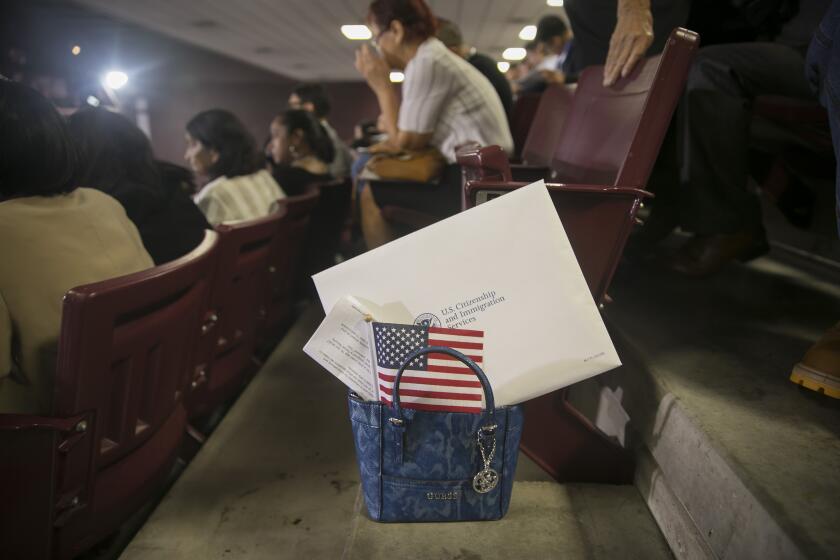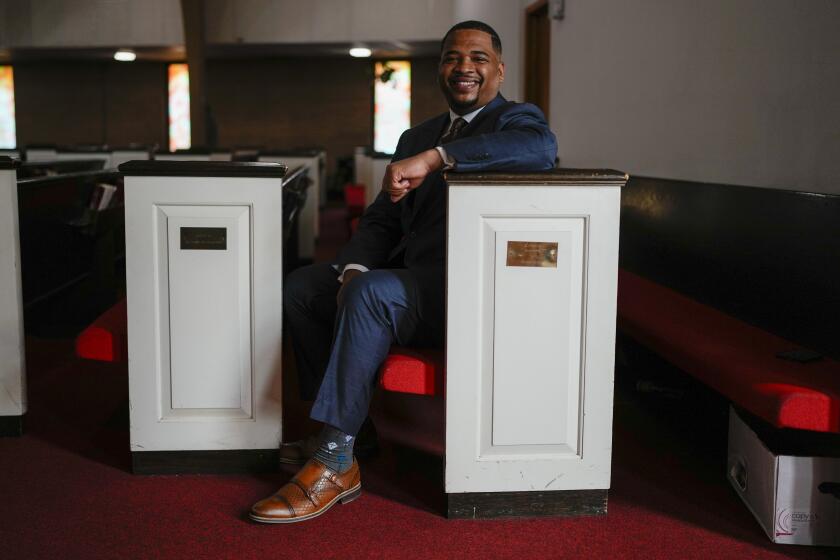2010 census may be tougher and costlier
The nation’s census chief said Tuesday that the housing crisis, the economic recession and waves of new immigrants could make an accurate 2010 count more difficult and expensive than a decade ago.
Robert Groves, U.S. Census Bureau director, said widespread housing foreclosures have displaced many people, making them harder and more expensive to count. Increased immigration has heightened the challenge of reaching people in their own languages and assuring them of the census’ importance and privacy safeguards.
At the same time, the recession has prompted major reductions in state and local funding for census outreach, Groves said at a breakfast meeting in Los Angeles. California has cut its census funding to $2 million -- from $24.7 million a decade earlier -- and a study released this week by the Pew Charitable Trusts found that L.A. city funding has plunged by half.
But the census director outlined several new initiatives to combat these problems as officials prepare to launch the count next April. They include a fivefold increase in local outreach staff, financed by a federal funding hike to $14.7 billion, more than double the $6.2 billion spent during the last count. Foundations such as the California Endowment and the California Community Foundation have also contributed to census funding.
Census officials also plan extensive outreach to immigrants and minorities, who traditionally have been undercounted. A 2002 UCLA study estimated that the undercount rate in Los Angeles County in 2000 was five times higher in African American and Latino neighborhoods than in white areas.
To help address those problems, the 2010 census will debut a bilingual Spanish-English ballot for more than 13 million households, along with census forms in Korean, Vietnamese, Chinese and Russian, and advertising in 59 languages.
The census design should also promote better response, Groves said. The bureau has jettisoned the long form in favor of a short questionnaire that is expected to yield an 8% to 10% higher response rate, he said.
A replacement form will be mailed to those households that do not respond the first time.
“Will it work? We don’t know,” Groves said. “The frightening thing about the census is you only . . . have one shot every 10 years.”
Political representation and billions of dollars in federal funding are at stake in the decennial count. More than $300 billion in federal funds for more than 170 programs are apportioned based on population, as determined by the census. Each person not counted results in the loss of $12,000 in federal funds over a decade, according to some estimates.
Congressional and state legislative seats are reallocated according to census population counts. Some experts predict California could lose a House seat for the first time after the 2010 count.
And a proposal by two Republican lawmakers to add a question about citizenship and legal status to the short form could cost as many as five California seats, according to one Republican estimate. The Senate is expected to vote this week on the amendment, which would exclude illegal immigrants from apportionment populations.
Groves couldn’t say whether the bureau’s efforts will adequately address the looming problems.
“We are just working 24/7 to make it the best census,” he said.
--
More to Read
Get the L.A. Times Politics newsletter
Deeply reported insights into legislation, politics and policy from Sacramento, Washington and beyond. In your inbox three times per week.
You may occasionally receive promotional content from the Los Angeles Times.







